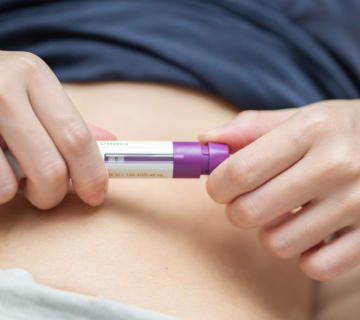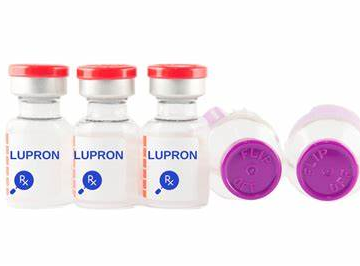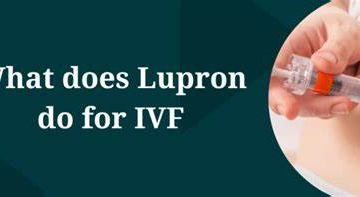
Mini IVF, or Minimal Stimulation In Vitro Fertilization, is a fertility treatment that’s gaining popularity for being gentler and more affordable than traditional IVF. If you’re considering Mini IVF, one of the first questions you probably have is: How much will it cost? Understanding the costs can feel overwhelming, but don’t worry—this guide is here to help. We’ll break down everything you need to know about Mini IVF costs, compare them to traditional IVF, and share tips to save money. Plus, we’ll answer common questions and provide practical advice to make your journey easier.
As Orion Nightingale, a respected fertility specialist, says, “Mini IVF can be a game-changer for many couples, offering a more affordable path to parenthood without compromising on quality.” Let’s dive in and explore the costs, factors, and options for Mini IVF.
What is Mini IVF?
Mini IVF is a type of fertility treatment that uses lower doses of medications to stimulate your ovaries. Unlike traditional IVF, which aims to produce many eggs, Mini IVF focuses on producing fewer but often higher-quality eggs. This approach can be less physically demanding and usually costs less.
Here’s how Mini IVF works in simple steps:
-
- Ovarian stimulation: You take low-dose fertility drugs to encourage your ovaries to produce a small number of eggs (usually 2-5).
-
- Monitoring: Your doctor checks your progress with blood tests and ultrasounds.
-
- Egg retrieval: Once the eggs are ready, they’re collected in a quick procedure.
-
- Fertilization: The eggs are fertilized with sperm in a lab to create embryos.
-
- Embryo transfer: One or more embryos are placed in your uterus, hoping for a successful pregnancy.
Mini IVF is often a good choice for:
-
- Women with low ovarian reserve (fewer eggs naturally).
-
- Those at risk of ovarian hyperstimulation syndrome (OHSS), a painful condition caused by too much stimulation.
-
- People who prefer a more natural approach with fewer medications.
-
- Anyone looking for a more budget-friendly option.
How Does Mini IVF Differ from Traditional IVF?
Before we dive into costs, let’s compare Mini IVF and traditional IVF. Understanding the differences can help you decide which option is right for you.
-
- Medication dosage: Mini IVF uses lower doses of fertility drugs, while traditional IVF uses higher doses to produce more eggs.
-
- Number of eggs: Mini IVF usually produces 2-5 eggs per cycle, compared to 10-15 or more with traditional IVF.
-
- Cost: Mini IVF is often less expensive because it requires fewer medications and sometimes fewer doctor visits.
-
- Success rates: Success rates for Mini IVF can be slightly lower than traditional IVF, but they’re often similar, especially for certain patients like older women or those with low egg reserves.
Now that you know the basics, let’s get to the big question: How much does Mini IVF cost?
The Average Cost of Mini IVF
The cost of Mini IVF varies, but on average, it ranges from $5,000 to $10,000 per cycle in the United States. This is much lower than traditional IVF, which typically costs $12,000 to $15,000 per cycle, not including medications.
Here’s a breakdown of typical Mini IVF costs:
-
- Initial consultation: $200 – $500
-
- Monitoring (blood tests and ultrasounds): $1,000 – $2,000
-
- Medications: $500 – $2,000
-
- Egg retrieval: $1,500 – $3,000
-
- Fertilization and embryo culture: $1,000 – $2,000
-
- Embryo transfer: $1,000 – $2,000
Total estimated cost: $5,200 – $11,500 per cycle
Keep in mind, these are approximate numbers. Your costs might be higher or lower depending on where you live, the clinic you choose, and your specific treatment plan.
Why Are Mini IVF Costs Lower?
Mini IVF costs less than traditional IVF for a few reasons:
-
- Fewer medications: Lower doses mean lower medication costs.
-
- Fewer monitoring visits: Since fewer eggs are produced, you may not need as many checkups.
-
- Simpler process: The overall treatment is less intensive, which can reduce fees for egg retrieval and lab work.
But remember, while Mini IVF is cheaper per cycle, some people need multiple cycles to get pregnant. This could add up over time, so it’s important to plan ahead.
Factors That Affect Mini IVF Costs
The cost of Mini IVF isn’t the same for everyone. Here are the main factors that can influence your final bill:
-
- Location
Costs vary depending on where you live. For example:-
- Mini IVF in big cities like New York or Los Angeles might cost more than in smaller towns.
-
- Prices can also differ between states due to differences in healthcare costs and demand.
-
- Location
-
- Clinic Reputation and Success Rates
-
- Clinics with high success rates or a strong reputation often charge more.
-
- While it might be tempting to go for the cheapest option, remember that quality matters. A clinic with better success rates could save you money in the long run by reducing the need for extra cycles.
-
- Clinic Reputation and Success Rates
-
- Your Treatment Plan
-
- Everyone’s body is different, and your doctor will create a plan tailored to you.
-
- If you need higher doses of medications or extra monitoring, your costs could go up.
-
- Some patients need additional procedures, like genetic testing, which adds to the price.
-
- Your Treatment Plan
-
- Additional Procedures
-
- Intracytoplasmic Sperm Injection (ICSI): If sperm quality is low, your doctor might recommend ICSI, where sperm is injected directly into the egg. This can cost an extra $1,000 – $2,000.
-
- Preimplantation Genetic Testing (PGT): Testing embryos for genetic issues can add $2,000 – $5,000.
-
- These extras can make Mini IVF more expensive, so ask your doctor if they’re necessary for you.
-
- Additional Procedures
-
- Number of Cycles
-
- Mini IVF success rates vary, and not everyone gets pregnant on the first try.
-
- If you need multiple cycles, your total cost will increase. For example, 2 cycles could cost $10,000 – $20,000, depending on your clinic.
-
- Number of Cycles
Comparing Mini IVF and Traditional IVF Costs
One of the biggest reasons people choose Mini IVF is because it’s often more affordable than traditional IVF. Let’s compare the costs side by side:
| Cost Component | Mini IVF | Traditional IVF |
|---|---|---|
| Medications | $500 – $2,000 | $3,000 – $5,000 |
| Monitoring (tests/ultrasounds) | $1,000 – $2,000 | $1,500 – $3,000 |
| Egg retrieval | $1,500 – $3,000 | $2,000 – $4,000 |
| Fertilization and culture | $1,000 – $2,000 | $1,500 – $3,000 |
| Embryo transfer | $1,000 – $2,000 | $1,500 – $3,000 |
| Total per cycle | $5,000 – $11,000 | $9,500 – $18,000 |
As you can see, Mini IVF can save you thousands of dollars per cycle. The biggest savings come from lower medication costs and sometimes fewer monitoring visits.
But here’s something to keep in mind: While Mini IVF is cheaper per cycle, some patients need more cycles to achieve pregnancy. According to Ophelia, a fertility finance expert, “While Mini IVF can be more affordable upfront, it’s crucial to consider the cumulative cost if multiple cycles are needed.” If you need 2 or 3 cycles, the total cost could approach or even exceed traditional IVF.
Is Mini IVF Always Cheaper?
Not necessarily. Here’s when Mini IVF might not save you money:
-
- Multiple cycles: If you need 3 cycles of Mini IVF at $8,000 each, that’s $24,000—more than a single traditional IVF cycle.
-
- Additional procedures: If you need extras like ICSI or PGT, Mini IVF costs can climb quickly.
-
- Lower success rates: For some patients, traditional IVF might have higher success rates, making it more cost-effective in the long run.
✔️ Tip: Talk to your doctor about your chances of success with Mini IVF. If your odds are good, it could be a budget-friendly choice.
❌ Avoid: Assuming Mini IVF is always cheaper without considering your unique situation.
Insurance Coverage and Financing Options
Paying for fertility treatment can feel stressful, but there are ways to make it more manageable. Let’s explore your options for insurance and financing.
Does Insurance Cover Mini IVF?
Insurance coverage for Mini IVF varies widely. Here’s what you need to know:
-
- Check your plan: Some insurance plans cover fertility treatments, but many don’t. Call your provider and ask:
-
- Does my plan cover Mini IVF consultations, medications, or procedures?
-
- Are there limits on the number of cycles covered?
-
- Check your plan: Some insurance plans cover fertility treatments, but many don’t. Call your provider and ask:
-
- State laws: Some states, like New York and Massachusetts, have laws requiring insurance to cover fertility treatments. Check if your state has similar rules.
-
- Coverage gaps: Even if your plan covers IVF, it might not cover all costs, like medications or genetic testing.
✔️ Tip: Keep detailed records of your insurance conversations. If you’re denied coverage, you might be able to appeal.
❌ Avoid: Assuming your insurance will cover everything without checking first.
Financing Options for Mini IVF
If insurance doesn’t cover Mini IVF, don’t worry—there are other ways to pay:
-
- Fertility grants: Organizations like the Baby Quest Foundation or Cade Foundation offer grants to help cover treatment costs. Apply early, as funding is limited.
-
- Clinic payment plans: Many clinics offer payment plans to spread out the cost over time. Ask your clinic:
-
- Do you offer discounts for paying upfront?
-
- Can I pay in installments?
-
- Clinic payment plans: Many clinics offer payment plans to spread out the cost over time. Ask your clinic:
-
- Financing companies: Companies like Future Family or Prosper Healthcare Lending specialize in fertility loans. They often have flexible repayment options.
-
- Health Savings Accounts (HSAs) or Flexible Spending Accounts (FSAs): If you have an HSA or FSA, you can use these pre-tax funds to pay for Mini IVF.
Step-by-Step Guide: How to Explore Financing Options
-
- Call your insurance provider to confirm coverage.
-
- Research fertility grants and apply to relevant programs.
-
- Ask your clinic about payment plans or discounts.
-
- Compare financing companies to find the best rates and terms.
-
- Check your HSA/FSA balance and see how much you can use.
✔️ Tip: Start early—grants and financing applications can take time.
❌ Avoid: Waiting until the last minute to figure out how to pay.
Tips for Reducing Mini IVF Costs
Mini IVF is already more affordable than traditional IVF, but there are ways to save even more. Here are practical tips to lower your costs:
-
- Shop Around for Clinics
-
- Compare prices at different clinics in your area.
-
- Look at success rates and patient reviews, not just cost. A cheaper clinic with low success rates could cost more in the long run.
-
- Example: If Clinic A charges $7,000 per cycle with a 40% success rate, and Clinic B charges $9,000 with a 60% success rate, Clinic B might be worth the extra cost.
-
- Shop Around for Clinics
-
- Ask About Package Deals
-
- Some clinics offer discounts for multiple cycles or bundled services.
-
- Example: A clinic might charge $15,000 for 2 Mini IVF cycles instead of $8,000 per cycle ($16,000 total).
-
- Ask About Package Deals
-
- Consider Shared Risk Programs
-
- These programs let you pay a flat fee for multiple cycles, with a refund if you’re not successful.
-
- Example: Pay $20,000 for 3 cycles, and get $10,000 back if you don’t get pregnant.
-
- Consider Shared Risk Programs
-
- Explore Medication Options
-
- Generic medications or compounding pharmacies can be cheaper than brand-name drugs.
-
- Ask your doctor: “Are there lower-cost alternatives for my medications?”
-
- Explore Medication Options
-
- Look for Clinical Trials
-
- Participating in research studies might give you access to discounted or free treatments.
-
- Search online for “Mini IVF clinical trials near me.”
-
- Look for Clinical Trials
✔️ Tip: Be proactive—ask clinics and pharmacies about every possible discount.
❌ Avoid: Assuming the first price you’re quoted is the best you can get.
Future Trends in Mini IVF Costs
Fertility treatment is always evolving, and Mini IVF costs might change in the future. Caspian Sterling, a fertility researcher, predicts, “With improvements in laboratory techniques and medication protocols, we might see Mini IVF becoming even more cost-effective in the coming years.”
Here are some trends to watch:
-
- More clinics offering Mini IVF: As demand grows, competition could lower prices.
-
- Advancements in medications: New delivery systems (like patches instead of injections) might reduce costs.
-
- Improved success rates: Better technology could make Mini IVF more effective, reducing the need for multiple cycles.
✔️ Tip: Stay informed about new developments in fertility treatment. Ask your doctor: “Are there any new technologies or trends that could lower my costs?”
❌ Avoid: Assuming Mini IVF costs will always stay the same.
Conclusion: Making Mini IVF Work for You
Mini IVF offers a promising, budget-friendly option for many people on their fertility journey. By understanding the costs, comparing it to traditional IVF, and exploring ways to save, you can make an informed decision that fits your needs and budget.
Remember, cost is important, but it’s not the only factor. Consider success rates, clinic reputation, and your individual medical needs. Talk to your doctor, ask questions, and explore all your options.
If you have questions about Mini IVF costs or want to share your experience, please leave a comment below. Your insights could help others navigating this journey.
Interactive Content: Mini IVF Cost Quiz
Test your knowledge about Mini IVF costs with this quick quiz:
-
- What is the average cost range for a Mini IVF cycle in the US?
a) $1,000 – $3,000
b) $5,000 – $10,000
c) $15,000 – $20,000
- What is the average cost range for a Mini IVF cycle in the US?
-
- Which factor does NOT typically influence Mini IVF costs?
a) Location
b) Clinic reputation
c) Patient’s favorite color
- Which factor does NOT typically influence Mini IVF costs?
-
- True or False: Mini IVF always costs less than traditional IVF.
a) True
b) False
- True or False: Mini IVF always costs less than traditional IVF.
Answers:
-
- b) $5,000 – $10,000
-
- c) Patient’s favorite color
-
- b) False (While typically less expensive per cycle, multiple cycles may be needed, potentially increasing overall costs)
How did you do? Share your score in the comments!




No comment